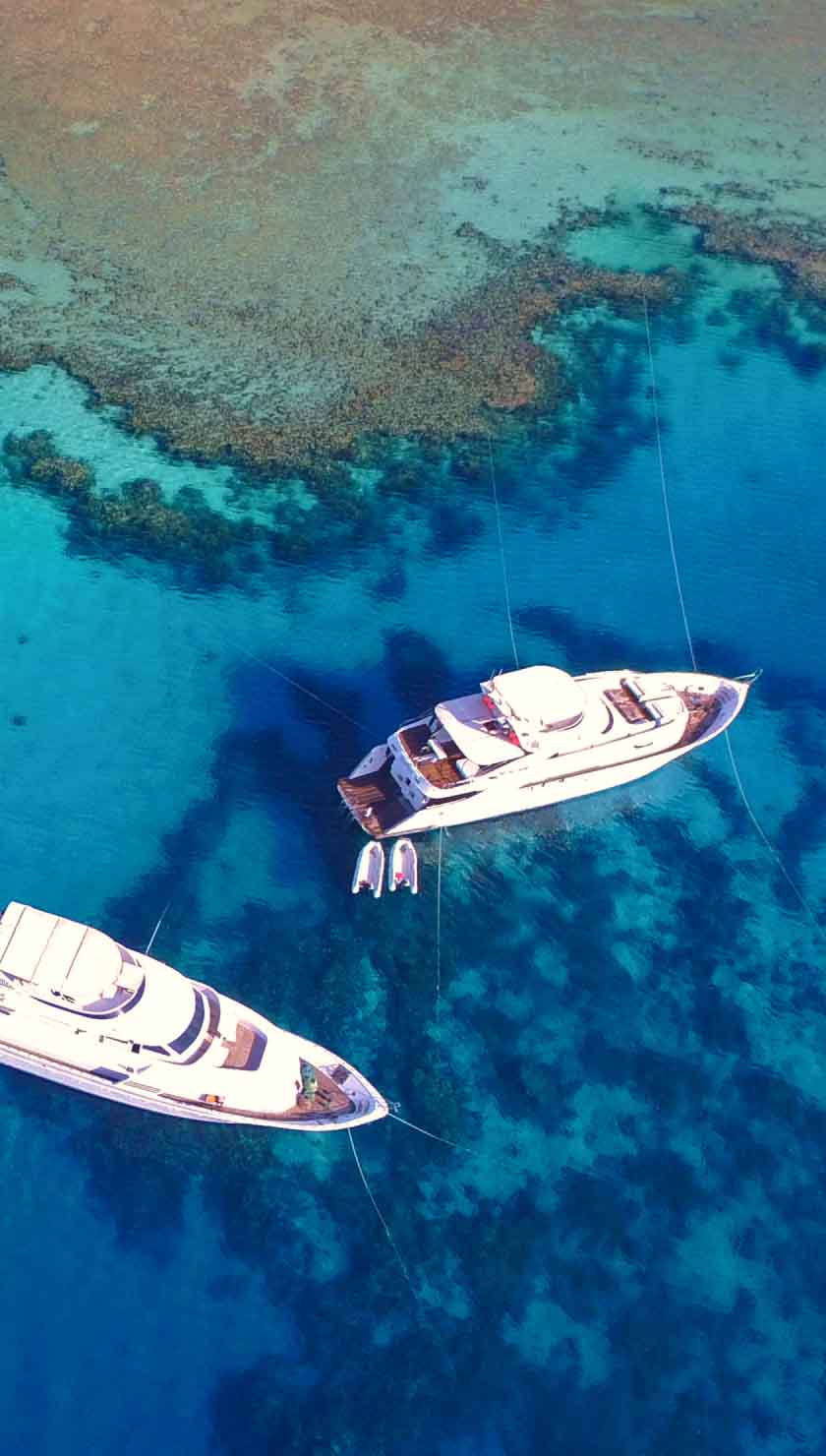Liveaboard Dive Sites of the Galapagos Islands
Punta Carrion on the west of Santa Cruz is the first stop for most liveaboards in the Galapagos. It is a thrill for naturalists with Galapagos sea lions dipping down to play with divers and shoals of eagle rays passing by. Underwater photographers will enjoy ample opportunities with white tip reef sharks which are numerous and very unwary of divers. If you are lucky you might also catch a glimpse of hammerheads and dolphins in the blue.
The current here is usually fairly mild by Galapagos standards making it a fairly easy dive. Visibility is variable all over the Galapagos but expect around 10 meters/33 ft. at Punta Carrion. Like most dives in Galapagos, Nitrox is highly recommended. The maximum depth is around 33 meters and you will definitely want to stay down as long as possible!
Liveaboards that offer dives in Punta Carrion are Galapagos Aggressor, Galapagos Master, Humboldt Explorer and the Nortada.
Wolf and Darwin islands are the most isolated of the Galapagos Islands and an overnight sail is required for liveaboards. These tiny islands arehome to unique birdlife and land visits are not permitted. Very few boats are allowed to stop at Wolf and Darwin meaning you will likely only have to share the site with research boats there to tag and study the large pelagics.
The underwater area around these islands are a highway for scalloped hammerheads heading for the Cocos. Silky sharks and Galapagos sharks and mantas are also passing by. You also have a chance to see pods of dolphins, spotted eagle rays and even orcas on occasion. There is also the chance to see the biggest fish in the world, the whale shark, between June and November.
Sea conditions in Wolf and Darwin can be rough with high swell and strong currents. Currents can be so strong that some dives might be drift dives. Most liveaboards require divers to have 50 + dives and be minimum advanced open water. Most of the dives are around the 30-meter mark meaning for enjoyment and safety, Nitrox is probably a wise choice.
Liveaboards are the only way to access Darwin and Wolf due to their isolated position. Galapagos Aggressor, Galapagos Master, Humboldt Explorer, Galapagos Sky, Astrea and Nortada all offer several days diving at Darwin and Wolf as part of their 7, 10 and 14 night cruises.
Cabo Douglas is on the eastern side of Fernandina Island. The dives are shallow mostly above 26 meters with much of the interesting wildlife around the shore. Here you can see marine iguanas, a species unique to Galapagos. These iguanas can dive for up to ten minutes, feeding on algae growing on the rocks. There are also flightless cormorants, Galapagos penguins and sea horses around Cabo Douglas. It is ideal for those who want to dive with unique animal species and underwater photographers will have ample subjects with good light.
Cousins Rock is a tiny rocky island on the north of Santiago Island. On land it is inhabited by sea birds and sea lions. The underwater landscape is perfect for underwater photography with black coral, sponges and sea fans. It is also a prime spot to see mantas passing by. Liveaboards that offer dives in Cousins Rock are Galapagos Aggressor, Galapagos Master, Humboldt Explorer, Galapagos Sky, Astrea and Nortada.
Best time to dive in the Galapagos Islands
Diving in Galapagos is fantastic all year round but there are two distinct seasons.
The warm season is December to May with water temperatures around 23-25°C/75-80°F. The conditions are calmer and currents are less at this time of year. It is a great time to see huge numbers hammerheads, silkys and Galapagos sharks.
The cooler season is June to November with water temperatures dropping to 16-18°/60-65°F. Rougher sea conditions and strong currents make the diving more challenging. The cool season is all about whale sharks which are around the islands of Darwin and Wolf at this time. There are still large schools of hammerheads and occasional silkys and Galapagos shark around the islands.
Visibility is generally between 10 and 21 meters (30 to 70 feet) and conditions can be challenging because of the surges and currents common in the area.
Top tips for liveaboards in Galapagos
- Diving in Galapagos can be cold especially in the cool season, and most liveaboards offer 3-4 unmissable dives per day. 7mm wetsuits and hoods are recommended for comfort.
- The water is about 6 percent saltier, so adjusting your weights to compensate for greater buoyancy is necessary.
- Gloves or a reef hook are a necessity. Strong currents mean holding onto rocks, which are almost always covered in sharp barnacles.
- Bring lots of extra memory for cameras and GOPROs, you won’t want to miss a thing.
- Most liveaboards offer the opportunity to do land visits. These offer a unique insight into one of the world´s most biodiverse ecosystems.
Galapagos Liveaboard Departures
Liveaboards in Galapagos all depart from Baltra Island making it most convenient to fly here. You can also fly to neighbouring island San Cristobal and take a ferry to Baltra but flights are less frequent and more popular with island residents than tourists. Most liveaboards and hotels will arrange to pick you up from the airport and transfer you across the canal
Getting to the Galapagos Islands
Getting to Galapagos from Ecuador is relatively easy. Most flights are around a 2-hour transit from Guayaquil and Quito which both have international airports. The most frequent flights are with airlines LAN, Tame and Avianca. Be sure to give a few days extra when flying from Quito, volcanic activity around the city can cause delays.
Due to the highly protected nature of the Galapagos National Park visitors should bear a few things in mind before travelling. Before departure you will have to pay $20 for a departure/arrival card and have your bags be checked for biological contaminants.
Bringing any plants, seed or biological goods is forbidden and signing the card confirms this. If you are bringing hiking boots, make sure they are clean and have no plant material or seeds on them. These rules are to stop invasive species which are one of the biggest threat to the unique ecosystem of the islands. You will also have to pay $100 national park fee on arrival.











